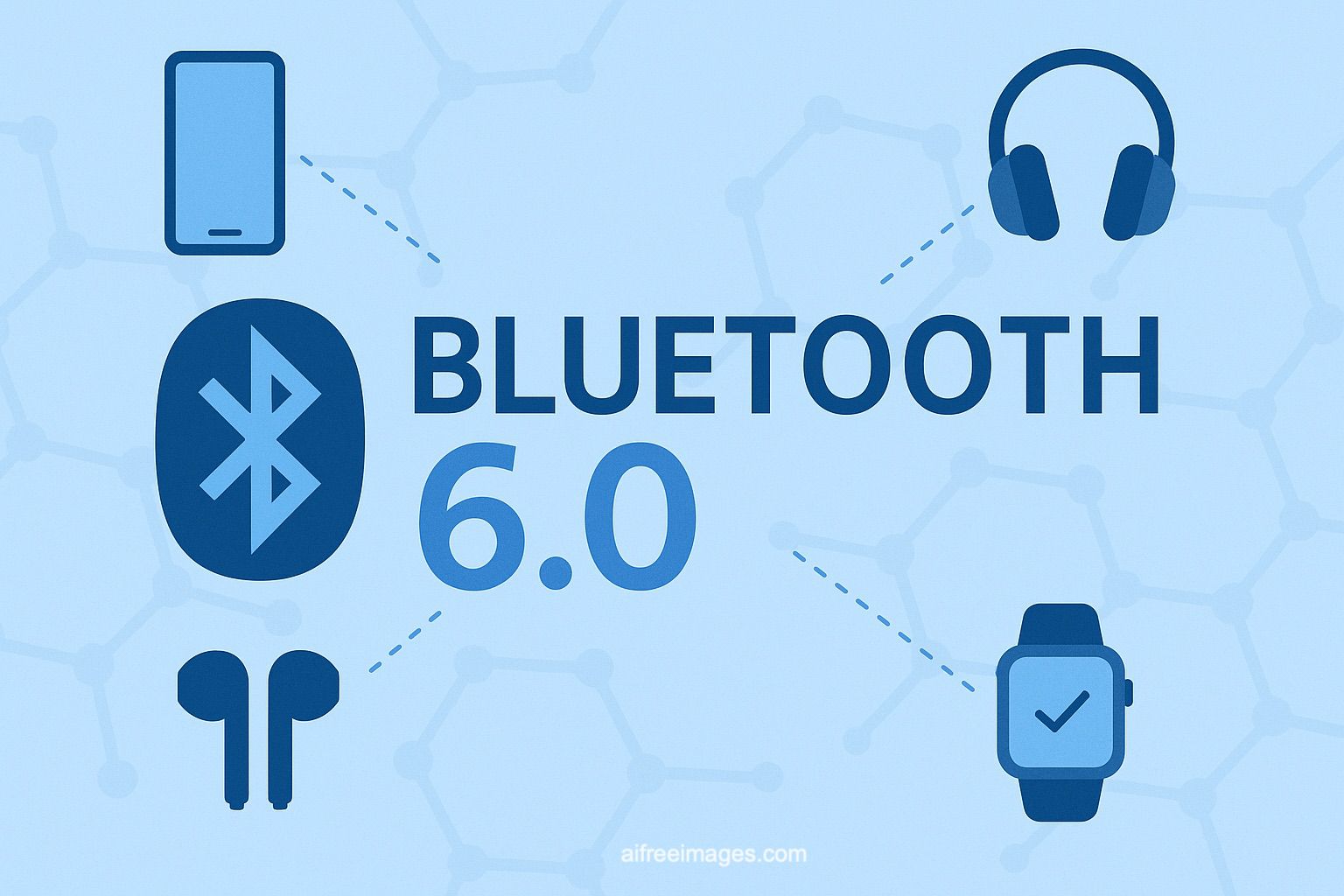Bluetooth 6.0 marks a significant turning point in wireless technology, greatly surpassing the capabilities of the 5.3 standard and opening new possibilities for automotive, industrial IoT, consumer electronics, and health sectors.
Bluetooth continues to evolve to meet the needs of a hyper-connected society. The arrival of version 6.0 signifies not just incremental improvements, but a profound transformation that impacts all sectors where connectivity is essential. Below is a detailed technical breakdown between Bluetooth 6.0 and 5.3, along with a comparative table of the protocol’s evolution since its early versions.
Evolution of Bluetooth: Key Versions and Improvements
| Version | Year | Max Speed | Range | Key Features |
|---|---|---|---|---|
| 2.0 + EDR | 2004 | 3 Mbps | 10 m (class 2) | Enhanced Data Rate, lower power consumption |
| 4.0 (LE) | 2010 | 1 Mbps (LE) | 50 m (LE) | Bluetooth Low Energy, ideal for IoT and wearables |
| 5.0 | 2016 | 2 Mbps (LE) | 240 m (LR) | Extended range, double speed, 255-byte messages |
| 5.2 | 2020 | 2 Mbps (LE) | 240 m (LR) | Isochronous Channels, LE Audio, increased efficiency |
| 5.3 | 2021 | 2 Mbps (LE) | 240 m (LR) | Improvements in energy consumption, latency, and robustness |
| 6.0 | 2025* | 4 Mbps (LE) | 300 m | Latency <10ms, enhanced security, energy efficiency |
*Estimated standardization/initial adoption date
Technical Differences Between Bluetooth 6.0 and 5.3
1. Transfer Speed
- Bluetooth 5.3: Up to 2 Mbps in Low Energy (LE) mode.
- Bluetooth 6.0: Up to 4 Mbps LE, doubling the bandwidth for multimedia applications, data transfer, and device synchronization.
2. Latency
- Bluetooth 5.3: Typical latency of 20 ms.
- Bluetooth 6.0: Ultra-low latency, under 10 ms. Essential for augmented reality, wireless gaming, and real-time control.
3. Range and Robustness
- Bluetooth 5.3: Up to 240 meters in Long Range (LR) mode, depending on environmental conditions.
- Bluetooth 6.0: Extends range to about 300 meters, with intelligent interference management and greater stability in crowded environments.
4. Energy Efficiency
- Bluetooth 5.3: Introduced improvements in consumption and transmission optimization.
- Bluetooth 6.0: Advanced low-power algorithms and “Ultra Low” sleep modes, ideal for sensors and wearables with extended battery life.
5. Security
- Bluetooth 5.3: Enhanced encryption, but with some vulnerable vectors.
- Bluetooth 6.0: More robust end-to-end encryption, hardware authentication, and new protection protocols against man-in-the-middle attacks and spoofing.
6. Advanced Multipoint and Mesh
- Bluetooth 5.3: Basic multipoint connectivity, but limited in synchronization and simultaneous streaming.
- Bluetooth 6.0: Real multipoint connections and optimized mesh networks, enabling shared audio, advanced home automation controls, and resilient industrial networks.
Sectoral Use Cases for Bluetooth 6.0
Automotive
- Seamless audio streaming integration for all passengers, synchronization between car devices, even more secure proximity access and start systems, and OTA updates.
Industrial IoT
- Thousands of interconnected sensors in smart factories with ultra-low latency and robust coverage. Mesh network supporting critical real-time operations with low consumption.
Consumer Electronics
- Wireless headphones and speakers with high-resolution audio without dropouts or delays. Virtual and augmented reality devices with enhanced fluidity and motion precision.
Health and Wearables
- Smartwatches and biometric sensors transmitting health data in real-time, with lower energy consumption and advanced encryption to ensure privacy.
Smart Home
- Lighting, climate control, cameras, and locks operating over Bluetooth mesh networks, more resistant to interference and with extended range.
Conclusion
Bluetooth 6.0 is set to become the new benchmark for wireless connectivity in the coming decade. Its technical improvements will enable businesses and users to enjoy faster, more reliable, and secure connections, boosting key sectors and accelerating the transition towards the Internet of Things and total mobility. Its adoption, expected in 2025-2026 in next-generation devices, will undoubtedly drive a new wave of wireless innovation.
More information: Bluetooth 6.0

